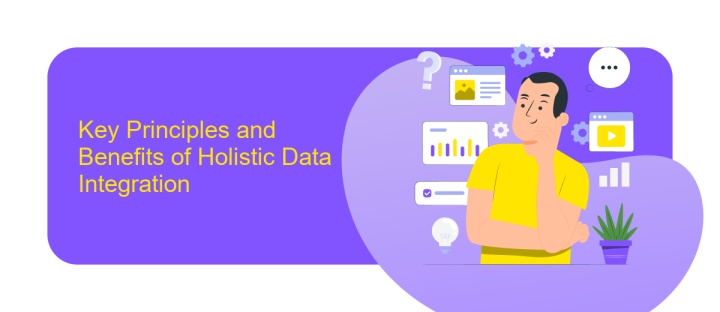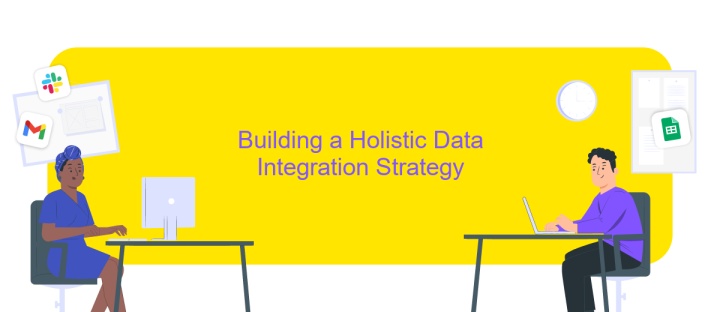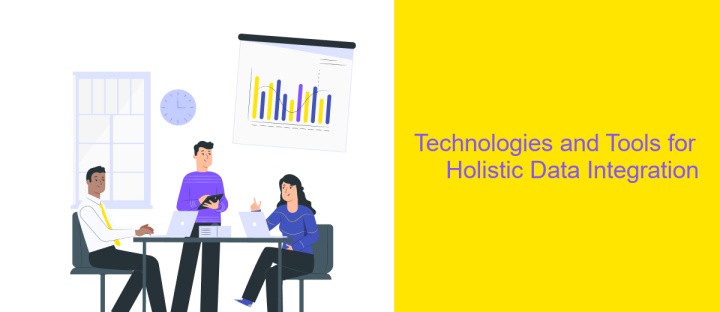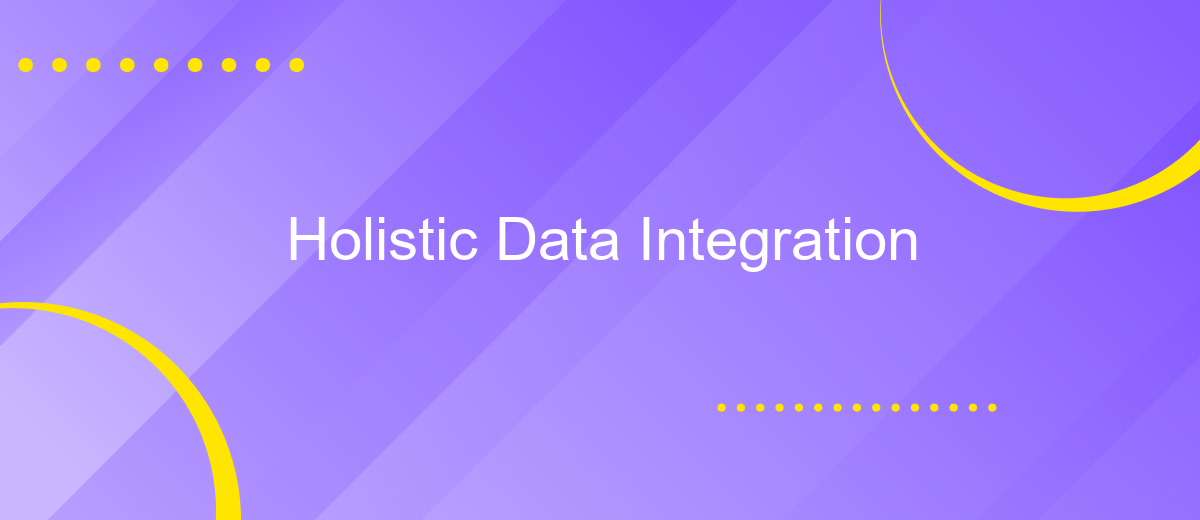Holistic Data Integration
Holistic data integration is a comprehensive approach that unifies disparate data sources into a cohesive system, enabling organizations to gain meaningful insights and make informed decisions. By seamlessly combining structured and unstructured data, this method enhances data accessibility and accuracy. It breaks down silos, fosters collaboration, and supports strategic initiatives, ultimately driving innovation and efficiency across various sectors.
Understanding Holistic Data Integration
Holistic data integration is a comprehensive approach that aims to unify data from disparate sources into a cohesive, accessible, and meaningful whole. This methodology acknowledges the complexity and diversity of data ecosystems, emphasizing the importance of considering all facets of data management, including data quality, governance, and interoperability. By adopting a holistic perspective, organizations can ensure that their data integration processes not only consolidate information effectively but also enhance data accuracy and usability across various applications.
- Ensures seamless data flow between different systems and platforms.
- Facilitates improved decision-making through enhanced data insights.
- Supports compliance and data governance requirements.
- Enhances data quality and consistency across the organization.
- Promotes scalability and adaptability in data management practices.
Implementing holistic data integration requires a strategic approach that involves collaboration across departments and the use of advanced technologies like AI and machine learning. By focusing on the entire data lifecycle, organizations can unlock the full potential of their data assets, driving innovation and maintaining a competitive edge. This comprehensive integration strategy not only addresses current data challenges but also prepares organizations for future data demands.
Key Principles and Benefits of Holistic Data Integration

Holistic data integration is a comprehensive approach that ensures seamless connectivity and interaction between various data sources, systems, and applications. One of the key principles is the unification of disparate data silos into a cohesive data ecosystem, enabling organizations to gain a complete view of their information landscape. This approach emphasizes data consistency, quality, and accessibility, ensuring that data is reliable and readily available for decision-making processes. By leveraging advanced integration platforms like ApiX-Drive, businesses can automate data workflows and enhance interoperability, reducing the complexity and time associated with manual data handling.
The benefits of holistic data integration are manifold. It enhances data-driven decision-making by providing a single source of truth, which improves operational efficiency and strategic planning. Additionally, it fosters innovation by enabling real-time data analysis and insights, thereby supporting agile business responses. Holistic integration also strengthens data governance and compliance, as it facilitates better data tracking and auditing. Ultimately, this approach empowers organizations to harness the full potential of their data, driving growth and competitive advantage in a rapidly evolving digital landscape.
Building a Holistic Data Integration Strategy

To develop a comprehensive data integration strategy, organizations must first understand the importance of aligning their data initiatives with business objectives. This alignment ensures that data integration efforts directly support the organization's goals, enhancing decision-making and operational efficiency. A holistic approach also involves considering the diverse data sources, formats, and systems that exist within the organization, ensuring seamless connectivity and interoperability.
- Identify and prioritize key business objectives that data integration should support.
- Conduct a thorough inventory of existing data sources, formats, and systems.
- Develop a scalable architecture that accommodates current and future data needs.
- Implement robust data governance policies to ensure data quality and compliance.
- Foster collaboration across departments to encourage data sharing and integration.
By following these steps, organizations can create a robust data integration framework that not only meets current demands but is also adaptable to future challenges. This strategic approach promotes a unified view of enterprise data, empowering stakeholders with accurate insights and fostering a culture of data-driven decision-making. Ultimately, a well-crafted holistic data integration strategy enhances organizational agility and competitiveness in an increasingly data-centric world.
Technologies and Tools for Holistic Data Integration

Holistic data integration is a comprehensive approach that combines various data sources into a unified view, facilitating better decision-making and insights. This process requires a range of technologies and tools to effectively manage, transform, and integrate data from disparate systems. The goal is to ensure seamless data flow and accessibility across an organization.
Key technologies in holistic data integration include ETL (Extract, Transform, Load) tools, data warehouses, and data lakes. These technologies help in aggregating data from multiple sources, cleansing it, and storing it in a structured format. Additionally, cloud-based platforms play a critical role by offering scalable solutions for data integration, enabling real-time processing and advanced analytics.
- ETL Tools: Facilitate data extraction, transformation, and loading processes.
- Data Warehouses: Store structured data for efficient querying and reporting.
- Data Lakes: Manage large volumes of unstructured data for analysis.
- Cloud Platforms: Provide scalable and flexible data integration solutions.
Moreover, machine learning and artificial intelligence are increasingly being integrated into these tools to enhance data quality and automate integration processes. By leveraging these technologies, organizations can achieve a holistic view of their data, driving innovation and strategic growth.


Challenges and Future Trends in Holistic Data Integration
Holistic data integration faces several challenges, including data heterogeneity, scalability, and maintaining data quality. As organizations gather data from diverse sources, ensuring seamless integration becomes increasingly complex. The need to harmonize structured, semi-structured, and unstructured data while preserving its integrity is a significant hurdle. Additionally, as data volumes grow, scalable solutions that can adapt to increased demand without compromising performance are crucial. Ensuring data quality and consistency across integrated systems remains a persistent challenge, requiring robust validation and cleansing processes.
Looking towards the future, the integration landscape is set to evolve with advancements in AI and machine learning, offering more intelligent and automated solutions. Tools like ApiX-Drive are paving the way for more efficient integration setups by providing user-friendly platforms that facilitate connectivity between various applications and services. As these technologies mature, they promise to simplify integration processes, making them more accessible to non-technical users. Moreover, the emphasis on real-time data integration is expected to grow, enabling organizations to make timely, data-driven decisions in an increasingly dynamic environment.
FAQ
What is holistic data integration?
Why is holistic data integration important for businesses?
How does holistic data integration differ from traditional data integration?
What are the challenges in implementing holistic data integration?
How can businesses automate and streamline their data integration processes?
Time is the most valuable resource in today's business realities. By eliminating the routine from work processes, you will get more opportunities to implement the most daring plans and ideas. Choose – you can continue to waste time, money and nerves on inefficient solutions, or you can use ApiX-Drive, automating work processes and achieving results with minimal investment of money, effort and human resources.

